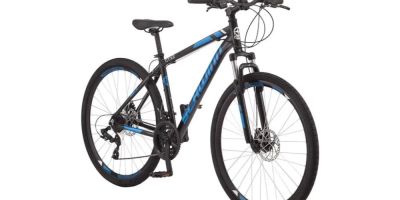The Evolution of Mountain Biking: From Its Humble Beginnings to Today's Thrills
1. The Birth of Mountain Biking: How It All Began
As a lifelong cycling enthusiast, I’ve always been fascinated by the story of mountain biking and how it has grown from a niche sport into a global phenomenon. The history of mountain biking is a tale of innovation, adventure, and a bit of rebellion. Mountain biking, as we know it today, began in the late 1960s and early 1970s in California, with a group of riders seeking to push the limits of what bicycles could do off-road.
The origins of mountain biking are closely tied to the adventurous spirit of a group of cycling enthusiasts from Marin County, California. These riders, often referred to as the “Repack Riders,” would take their bicycles to the hills surrounding the area, creating makeshift trails down rugged terrain. They called their trails "downhill tracks," and the aim was not to race but simply to have fun and experience the thrill of riding on unpaved surfaces.
One of the key moments in the early days of mountain biking was the creation of the first “Mountain Bikes.” Before this time, bicycles were mostly designed for smooth roads. These early bikes, made from parts of older bikes, featured wider tires, stronger frames, and improved braking systems, which made them more capable of handling rough terrain. This was a game-changer for the sport, and the stage was set for what would become a massive cultural and athletic shift.
2. The Growth of Mountain Biking in the 1980s
As the 1980s rolled in, mountain biking began to pick up speed. The sport gained more attention thanks to its inclusion in cycling magazines and its increasing popularity among adventure enthusiasts. Companies like Schwinn, Trek, and Specialized started to create mass-produced mountain bikes specifically designed for rugged terrain. These bikes were equipped with features like suspension forks, wide knobby tires, and gears that allowed cyclists to tackle steep hills and rocky paths with ease.
During this time, mountain biking races began to emerge. One of the most significant milestones in the sport's history was the creation of the “Repack” race in Marin County, California, which became the first official mountain bike race. Riders would compete down steep hills, trying to beat each other’s times. It was an exciting and intense competition, and it fueled the growing demand for high-performance bikes that could handle even the most demanding terrains.
The sport also saw the rise of new riding disciplines, including cross-country and downhill racing. Mountain biking was no longer just about casual rides through the hills—it became a competitive and highly skilled sport. During this time, the development of better suspension systems and innovations in frame geometry helped push the boundaries of what riders could achieve on trails.
3. The 1990s: Mountain Biking Goes Mainstream
The 1990s marked a pivotal decade for mountain biking. By this time, the sport had become widely recognized, with more cyclists adopting mountain biking as a fun and challenging way to enjoy nature. The advent of more specialized gear, such as clipless pedals, lightweight materials, and hydraulic disc brakes, made the sport even more accessible to a broader audience.
Another significant development was the rise of mountain biking tourism. Destinations like Moab, Utah, and Whistler, Canada, became known for their world-class mountain biking trails, drawing riders from all over the world. These destinations offered everything from technical singletrack trails to expansive downhill runs, providing diverse terrain for all levels of riders. This era also saw the growth of mountain biking festivals and events, which helped to further promote the sport to the masses.
In addition to recreational riding, professional mountain biking continued to evolve. Events like the UCI Mountain Bike World Cup and the introduction of the X-Games helped bring the sport to a global audience. Mountain biking gained a larger following as both a competitive and recreational activity, and the 1990s were undoubtedly a turning point in the sport’s evolution.
4. The 2000s and Beyond: Technology and Innovation
As we entered the 21st century, the evolution of mountain biking continued at a rapid pace. Advances in technology made mountain bikes lighter, faster, and more durable than ever before. Carbon fiber frames, air suspension, and better braking systems became standard features on high-end bikes. These innovations made mountain biking more accessible and enjoyable for riders of all levels.
The emergence of electronic shifting systems in the 2000s was another game-changer. These systems provided smoother gear changes and greater precision, allowing riders to focus more on the ride itself. Disc brakes, which had gained popularity in the previous decade, became the go-to choice for mountain bikers, offering better stopping power in all conditions.
Throughout the 2000s and into the 2010s, mountain biking experienced a surge in popularity across the globe. The rise of enduro and all-mountain riding, as well as the development of more aggressive trail bikes, has added more variety to the sport, allowing riders to explore different styles of biking. Today, there are specialized bikes for every discipline, from cross-country and downhill to enduro and fat biking.
5. The Evolution of Mountain Biking Culture and Community
Mountain biking has never just been about the bikes themselves; it’s about the community and the culture that surrounds the sport. From the early days of the Repack races to today’s large international events, mountain biking has built a tight-knit, passionate community. Over the years, I’ve experienced firsthand the camaraderie among riders—whether on a casual trail ride or at a competitive event, there’s a sense of respect and friendship that makes mountain biking truly unique.
The sport has also become more inclusive, with more women and younger riders taking up mountain biking than ever before. Programs aimed at getting kids on bikes and initiatives to make mountain biking more accessible to people of all backgrounds have played a key role in broadening the sport’s reach. This inclusivity has only helped to grow the sport, bringing more people into the fold and creating a diverse, welcoming environment for everyone.
6. Mountain Biking Today: A Thriving Sport with Endless Potential
Mountain biking is thriving today, with an ever-growing base of riders, more trails being built, and continued advancements in bike technology. What was once a niche sport is now a global phenomenon, with professional races and casual rides taking place all over the world. The growth of bike parks, mountain bike resorts, and trail networks ensures that mountain biking will continue to evolve and expand for years to come.
As I reflect on the history and evolution of mountain biking, it’s amazing to see how far the sport has come. From its humble beginnings in California to the high-tech, global sport it is today, mountain biking has truly stood the test of time. Whether you're an experienced rider or just getting started, there's never been a better time to get out there and explore the trails!
If you're looking for recommendations on the best bikes or mountain biking gear, be sure to check out Healthy Cycling for the latest products and expert advice.










